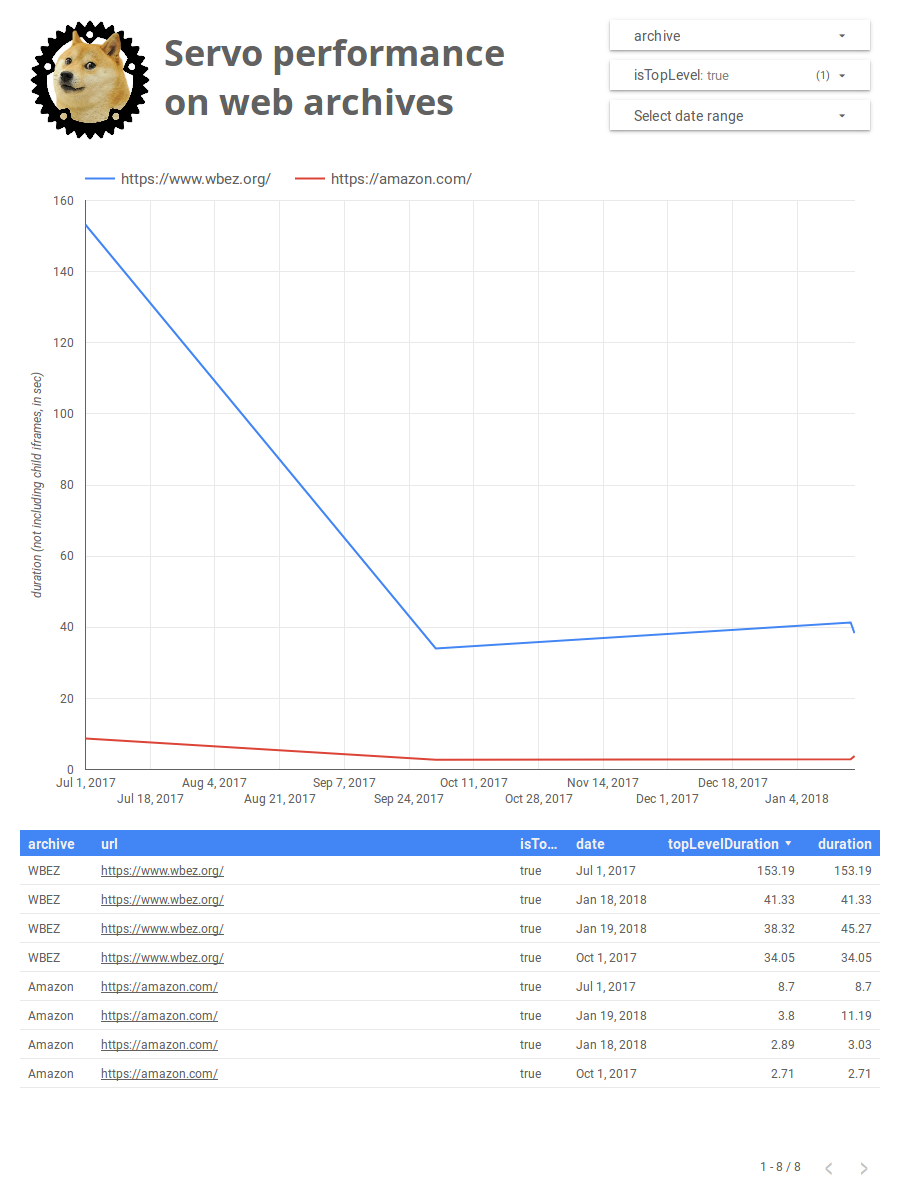This directory contains web archives, together with scripts which use them for performance testing of Servo.
WARC web archives are a de facto standard for archiving web content. They are the storage format for the Internet Archive Wayback Machine and supported by the Library of Congress.
Web archives can be [created and viewed] in Servo, using the pywb tools, which can be installed using:
vitualenv -p python3 venv
source venv/bin/activate
pip install git+https://github.com/ikreymer/pywb.git
Using the pywb tools in http proxy mode with Servo requires the proxychains command (installed in Debian-based systems by apt-get install proxychains).
In this example we'll play the WBEZ archive.
In one window, run the wayback server on the WBEZ archive:
wayback --proxy WBEZ
Then, run servo with this http proxy, so when you navigtate to a recorded web site it should take you to the recorded version:
proxychains ${SERVO_DIRECTORY}/mach run -r --certificate-path proxy-certs/pywb-ca.pem https://www.wbez.org/
In this example we'll add a web achive for an example web site example.com.
First create a collection for the Example files:
wb-manager init Example
Now start recording the web archive:
wayback --proxy Example --live --proxy-record --autoindex
In another window, run Servo with this http proxy, and navigate to the web site:
proxychains ${SERVO_DIRECTORY}/mach run -r --certificate-path proxy-certs/pywb-ca.pem https://www.example.com/
Once the site has finished loading, exit Servo and the wayback server.
To test your archive, follow the instructions for playing an archive. In one window:
wayback --proxy Example
and in another:
proxychains ${SERVO_DIRECTORY}/mach run -r --certificate-path proxy-certs/pywb-ca.pem https://www.example.com/
